The ski gear market is experiencing significant growth, driven by the rising popularity of skiing as a recreational activity and the increasing number of ski resorts worldwide. This article delves into the current trends, key players, and future projections of the ski gear market, providing valuable insights for industry stakeholders.
Table of Contents:
– Market Overview
– Innovative Materials and Textures in Ski Gear
– Design and Customization: Meeting Diverse Needs
– Technological Features Elevating Ski Gear
– Durability and Quality: Investing in Long-Lasting Gear
– Conclusion
Market Overview
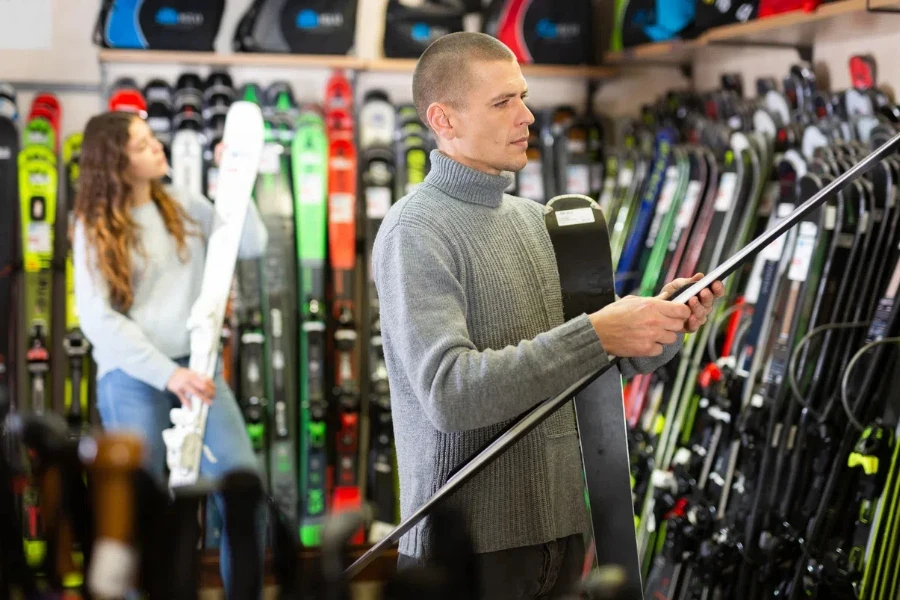
Current Trends in Ski Gear
The global ski gear and equipment market has been witnessing a steady growth trajectory. According to a report by Research and Markets, the market size reached USD 1.5 billion in 2023 and is projected to grow to USD 2.0 billion by 2032, exhibiting a compound annual growth rate (CAGR) of 3.25% during the forecast period. This growth is primarily driven by the increasing adoption of skiing as a recreational activity and the growing participation in various ski sports.
One of the notable trends in the ski gear market is the introduction of smart ski helmets. These helmets are equipped with advanced features such as global positioning systems (GPS), Bluetooth, and built-in headphones, providing real-time information about speed, altitude, location, and weather conditions. This technological advancement is enhancing the overall skiing experience and ensuring better safety for skiers.
Additionally, the utilization of three-dimensional (3D) printing technology to create customized ski gear and equipment is gaining traction. This innovation allows for the production of gear that offers enhanced comfort and improved performance, catering to the specific needs of individual skiers.
Key Players in the Ski Gear Market
The ski gear market is highly competitive, with several key players dominating the industry. Some of the prominent companies include Alpina Sports (Uvex Sports Group GmbH & Co. KG), Amer Sports (Anta Sports), Clarus Corporation, Coalition Snow, Decathlon, Fischer Sports GmbH, Helly Hansen (Canadian Tire Corporation Limited), Kohlberg & Co., L.L.C., Rossignol Group, and Volcom LLC (Authentic Brands Group).
These companies are continuously investing in research and development to introduce innovative products and maintain their competitive edge. For instance, Amer Sports, a leading player in the market, focuses on enhancing its product portfolio by incorporating advanced materials and technologies to improve the performance and durability of its ski gear.
Market Growth and Future Projections
The ski gear market is expected to witness substantial growth in the coming years, driven by several factors. The increasing number of ski resorts and the rising popularity of ski tourism are significant contributors to market expansion. According to Research and Markets, the growing participation in various ski sports, such as freestyle, cross-country, downhill skiing, ski mountaineering, and ski jumping, is positively influencing the market growth.
Moreover, the implementation of government initiatives to promote tourism and support the development of winter sports facilities is favoring the market growth. For instance, several countries are investing in the development of ski resorts and infrastructure to attract tourists and boost their economies.
The demand for eco-friendly and sustainable ski gear is also on the rise. Consumers are becoming more conscious of the environmental impact of their purchases and are seeking products made from sustainable materials. This trend is encouraging manufacturers to adopt eco-friendly practices and develop products that align with the growing demand for sustainability.
Innovative Materials and Textures in Ski Gear
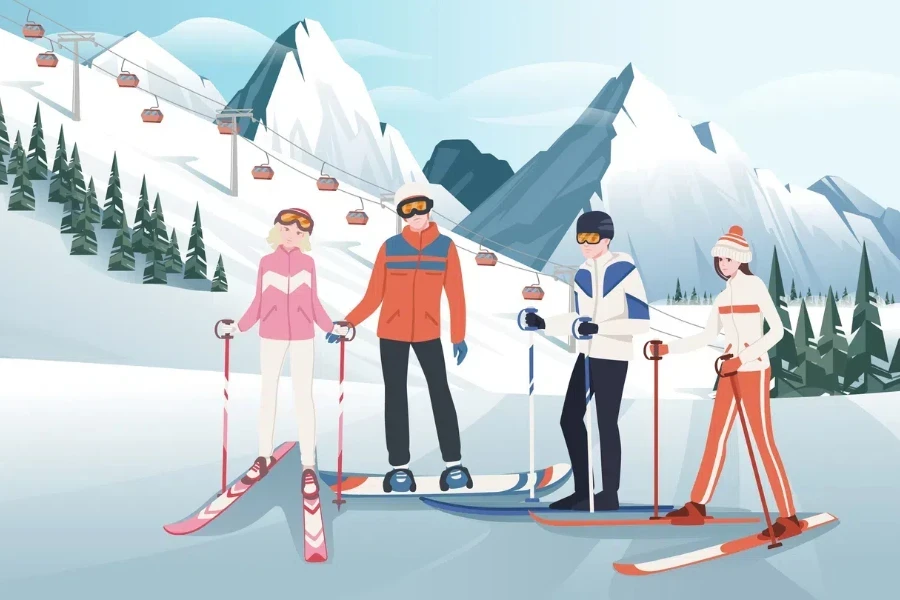
High-Performance Fabrics for Enhanced Comfort
The evolution of ski gear has seen a significant shift towards high-performance fabrics that enhance comfort and functionality. Modern ski pants, for instance, are crafted from a variety of materials designed to offer the perfect balance of weather protection, warmth, and breathability. Resort-goers typically prefer classic hardshell designs with light insulation to stay warm during lift rides. On the other hand, backcountry skiers often opt for softshell and stretch-infused options that provide improved range of motion and breathability. These fabrics are not only durable but also designed to wick moisture away from the body, keeping skiers dry and comfortable throughout their adventures.
Eco-Friendly Materials Gaining Popularity
Sustainability has become a crucial consideration in the design and manufacturing of ski gear. Brands like Patagonia and REI Co-op are leading the charge by incorporating recycled materials into their products. Many ski pants now use recycled nylon and polyester, along with PFC-free DWR coatings, which are more environmentally friendly. This shift towards eco-friendly materials not only reduces the environmental impact of ski gear production but also appeals to the growing number of environmentally conscious consumers. By choosing products made from sustainable materials, skiers can enjoy their sport while also contributing to the preservation of the natural landscapes they love.
Textures that Improve Functionality and Style
The textures of ski gear have also evolved to improve both functionality and style. Modern ski jackets and pants often feature a combination of hardshell and softshell fabrics, providing the best of both worlds. Hardshell fabrics offer superior weather protection, while softshell materials provide flexibility and comfort. Additionally, many ski jackets now include features like powder skirts and jacket-to-pant attachment systems, which help keep snow out and enhance overall performance. These innovations not only make ski gear more functional but also add a stylish edge, allowing skiers to look good while staying protected on the slopes.
Design and Customization: Meeting Diverse Needs
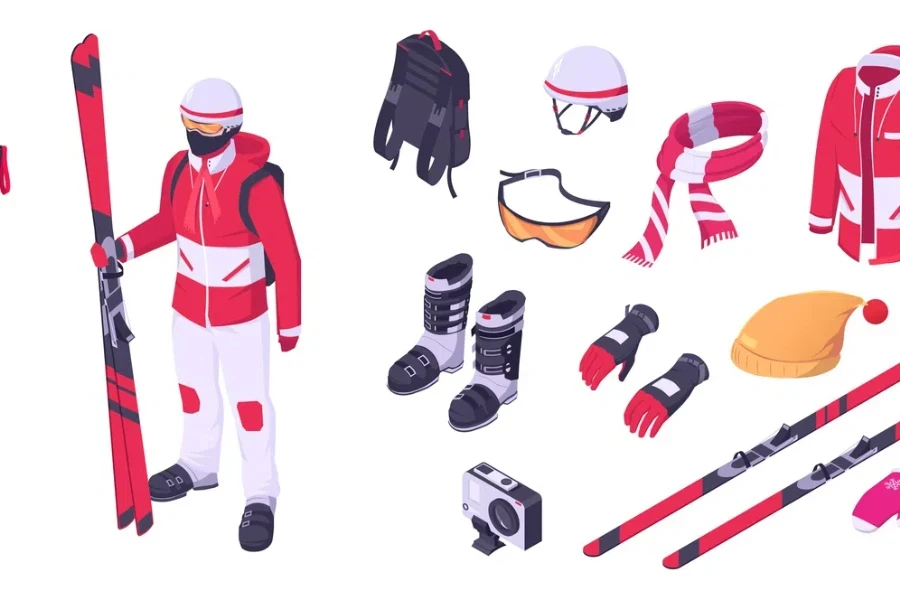
Trendy Designs that Appeal to Modern Skiers
The design of ski gear has come a long way, with modern skiers seeking both functionality and style. Brands are now offering a wide range of colors and sizes to cater to diverse preferences. For instance, REI’s First Chair GTX jacket is available in various colors and sizes, including tall options for men and up to 3X for women. This emphasis on trendy designs ensures that skiers can find gear that not only performs well but also matches their personal style.
Customization Options for a Personalized Experience
Customization has become a key trend in the ski gear industry, allowing skiers to personalize their equipment to suit their specific needs. From adjustable waistbands on ski pants to customizable boot fittings, skiers can now tailor their gear for optimal comfort and performance. The “Best Backcountry (Touring) Skis of 2024” report emphasizes the importance of a well-fitted boot, noting that a properly fitted boot can significantly enhance a skier’s experience. By offering customization options, brands are ensuring that skiers can enjoy a more personalized and enjoyable experience on the slopes.
Balancing Aesthetics with Practicality
While aesthetics are important, practicality remains a top priority in the design of ski gear. The challenge for manufacturers is to strike the right balance between style and functionality. Features like internal gaiters, zip cuffs, and beacon pockets are essential for enhancing the practicality of ski pants. These features ensure that skiers are well-equipped to handle various conditions while still looking stylish. By balancing aesthetics with practicality, brands are able to meet the diverse needs of modern skiers.
Technological Features Elevating Ski Gear
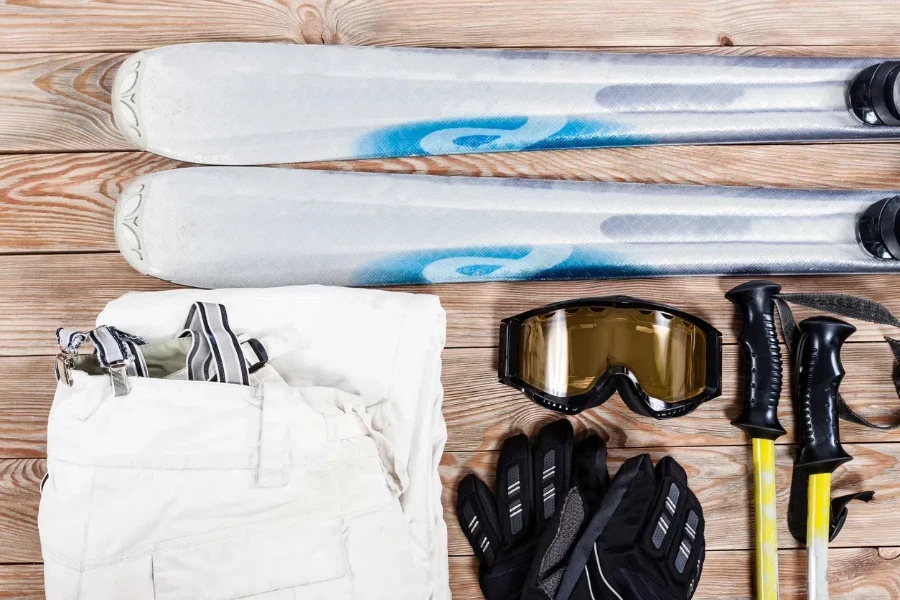
Smart Gear: Integrating Technology for Better Performance
The integration of technology into ski gear has revolutionized the sport, offering skiers enhanced performance and safety. Smart gear, such as helmets with built-in communication systems and goggles with heads-up displays, allows skiers to stay connected and informed while on the slopes. These technological advancements not only improve the overall skiing experience but also provide valuable data that can help skiers track their performance and progress.
Safety Enhancements through Advanced Tech
Safety is a paramount concern for skiers, and advanced technology has played a significant role in enhancing safety features in ski gear. According to the “Best Ski Helmets of 2024-2025” report, modern helmets now come equipped with features like MIPS (Multi-directional Impact Protection System) and RECCO reflectors, which improve protection against head injuries and aid in search and rescue operations. These innovations ensure that skiers can enjoy their sport with greater peace of mind, knowing that they are well-protected.
Weather Resistance: Gear that Adapts to Extreme Conditions
Weather resistance is a critical factor in the design of ski gear, as skiers often face extreme conditions on the slopes. Modern ski jackets and pants are designed to be highly weather-resistant, with features like Gore-Tex waterproofing and windproof fabrics. The “Best Ski Jackets of 2024” report highlights the importance of these features, noting that they help keep skiers dry and warm in harsh weather conditions. By incorporating advanced weather-resistant technologies, brands are ensuring that skiers can perform at their best, regardless of the weather.
Durability and Quality: Investing in Long-Lasting Gear
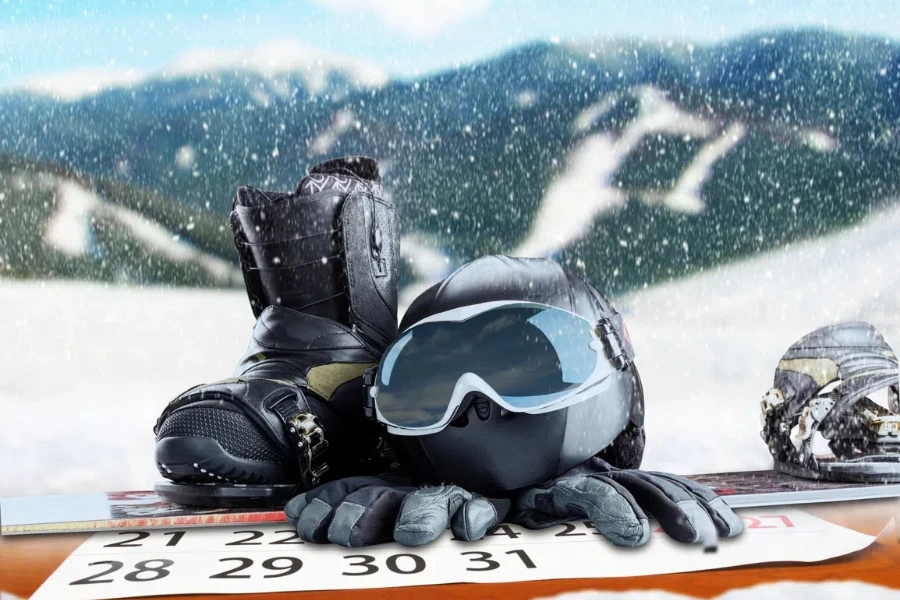
Importance of High-Quality Construction
Investing in high-quality ski gear is essential for ensuring durability and long-lasting performance. The construction of skis plays a crucial role in their performance and longevity. Skis with superior edge control and power transfer are often built with high-quality materials and craftsmanship, ensuring that they can withstand the rigors of the sport. By prioritizing high-quality construction, skiers can enjoy their gear for many seasons to come.
Durability as a Key Selling Point
Durability is a key selling point for ski gear, as skiers want equipment that can withstand the demands of the sport. The “Best Ski Pants of 2024-2025” report emphasizes the importance of durable fabrics and reinforced seams in ski pants, which help prevent wear and tear. Additionally, features like abrasion-resistant panels and reinforced cuffs add to the overall durability of the gear. By offering durable products, brands can build trust with their customers and ensure repeat business.
Ensuring Longevity through Superior Craftsmanship
Superior craftsmanship is essential for ensuring the longevity of ski gear. The craftsmanship of ski boots is particularly important, as a well-crafted boot can significantly enhance a skier’s performance and comfort. By focusing on superior craftsmanship, brands can create products that not only perform well but also stand the test of time. This commitment to quality ensures that skiers can rely on their gear for many years, making it a worthwhile investment.
Conclusion
The ski gear industry continues to evolve, driven by innovations in materials, design, technology, and craftsmanship. As skiers seek gear that offers both performance and style, brands are rising to the challenge by incorporating high-performance fabrics, eco-friendly materials, and advanced technological features. The emphasis on customization and durability ensures that skiers can enjoy a personalized and long-lasting experience on the slopes.




